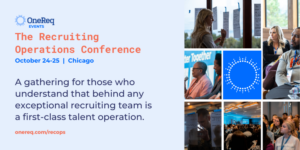BY: Wahab Owolabi
Last year when I published URx Year 4, I could never have imagined what was coming next. We faced (and are still dealing with) a global pandemic and a rallying call for social justice that we haven’t seen since the 1960’s.
With companies facing more pressure to diversify their workforce, University Recruiting (UR) teams are being judged by their ability to execute diversity recruiting strategies when in the past hitting hiring targets and successfully recruiting from top CS schools was the indicator of success. This change is a great thing. It requires UR leaders and teams to implement new strategies, skill sets, and tools. It also creates a new set of expectations but is not without challenges to our current ways of operating.
The Role of a University Recruiting Leader is Shifting
CEOs to Heads of Talent, because of the moment we’re in, are realizing the role of a UR Leader is incredibly crucial to their company’s success in diversifying their workforce. In the past, UR Leaders were focused on hitting hiring targets and setting appropriate strategies to connect with “top talent.” They are now being tasked with responsibilities and expectations that have a real impact on a company’s overall diversity goals. Companies are starting to understand that success in university recruiting today creates a diverse talent bench of experienced ICs and diverse middle manager pool tomorrow.
This is leading to more and more UR Leaders essentially running mini talent functions within companies. It’s a responsibility that most UR Leaders and teams have embraced. It also creates a need for strategic alignment across sourcing, events, programs, development, and onboarding which I believe requires a UR Leader either owns all of a company’s talent programs function and(or) report directly to a Head of Talent or Head of Technical Recruiting. Without this, companies run the risk of not maximizing their investments in diversity recruiting at both the university and experienced hiring levels.
I welcome these new expectations but they should come with the appropriate resources in terms of people and budget. Currently, that is not the case within the majority of tech companies. This has to change, and it starts with UR Leaders contracting this support with company leadership before agreeing to take on these new expectations.
Success in university recruiting today creates a diverse talent bench of experienced ICs and diverse middle manager pool tomorrow.
Lets be real about what it takes to build relationships with academic institutions
Success recruiting at a top ranked CS school can take upwards of 2-3 years and requires ongoing investment since students turnover every year. Why do we expect immediate results recruiting from HBCUs? Let’s be realistic about the distinction between the tech industries decades-long relationships with institutions like Stanford, MIT and the Ivys that span systemic investments in alumni, endowments, research, and yes, hiring. Compare that to the non-existent or months-old relationships with HBCUs. There’s an infrastructure to the Stanford relationship. Tech recruiters know who to talk to, how to handle those conversations and how to navigate the politics of a Stanford campus (quick, name your favorite HBCU professor).
The Stanfords and MITs have also had decades to build systems and processes to maximize the ability of their students to capitalize on this interest from tech. Tech companies are making the mistake of taking those strategies designed to work at Stanford and applying them to HBCUs. Just because you can throw a 100 mph fastball doesn’t mean you can throw a football 80 yards. This applies to the recruiters we are sending to campus (virtually) and building relationships with talent? Let’s face it, the demographics of recruiting teams in tech are no different than the companies they work for. They’re not diverse.
We Love HBCU’s
In recruiting, we will work to make sure that candidates see representation in their interview loops, yet we don’t make the same commitments to make sure that candidates see representation in who they are recruited by. Building diverse recruiting teams allows companies to show up authentically to HBCUs and for students of color at any institution. This isn’t simply to hire Black and LatinX recruiters to talk to Black and LatinX candidates. It’s deeper.
Representation leads to education. Companies have learned from their employees who are veterans and moms and so much more. Having Black and LatinX representation on your recruiting team enhances the entire team’s ability to show up authentically when recruiting this demographic. It impacts the system as well, providing teams more insight when designing strategy and implementing processes. So everyone loves HBCUs now, right? Why don’t we put that same energy into hiring HBCU grads into recruiting roles. For example, would having an HBCU grad on your recruiting team help you understand how to build genuine connections with HBCU professors, or Black and LatinX Community Based organizations?
URx parent company OneReq is currently running, with support from the Growth By Design Talent Team, the first cohort of the OneReq Recruiter Academy, designed to train graduating BIPOC students to launch a career in recruiting. I’ve been encouraged by the reception as a number of URx Community members and Talent Leaders across the industry are participating in the program as mentors and instructors.
A Closing Thought
If you take anything away from this it should be that University Recruiting Teams and Leaders tasked with strategic diversity goals need to be up-leveled and provided the support in people and budget commensurate with those goals. This shift has already taken place in HR as the role of Chief Diversity Officer or Head of Diversity and Inclusion has clearly been upleveled. It’s time to do the same in recruiting.
This is part 1 of a two part post. You can read part 2 – Creating a New System for University and Early Career Recruiting here.




